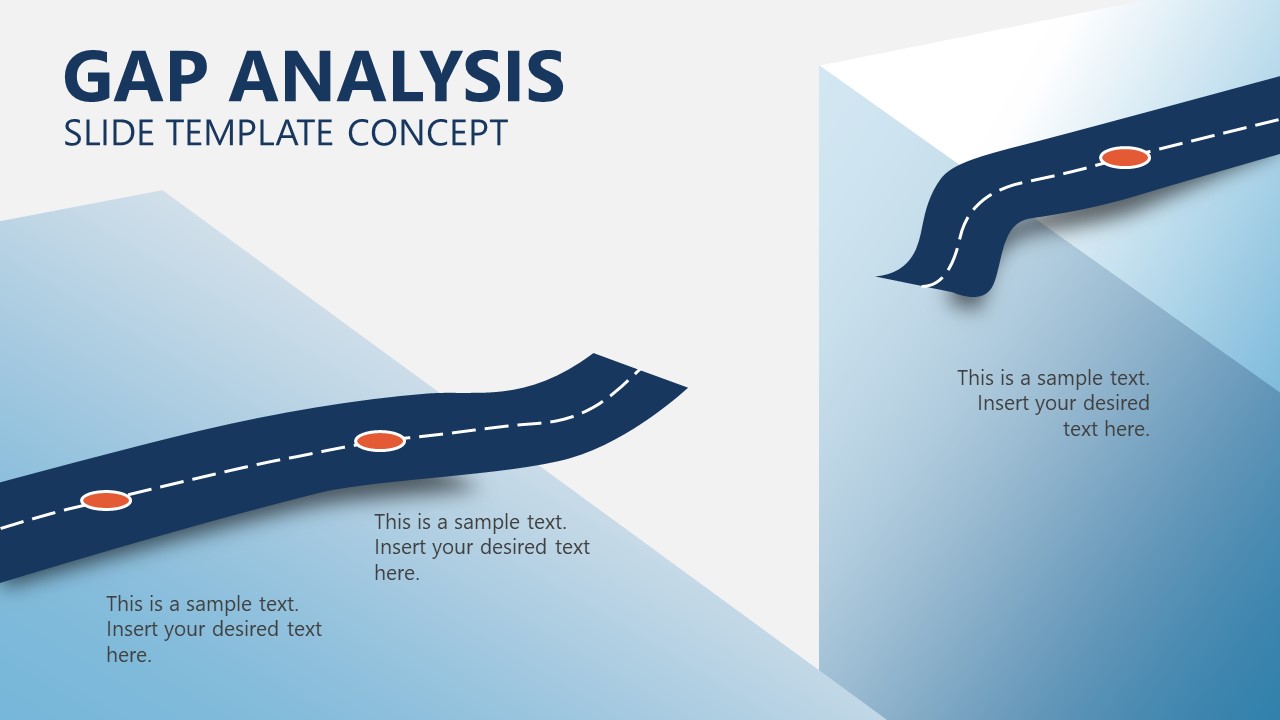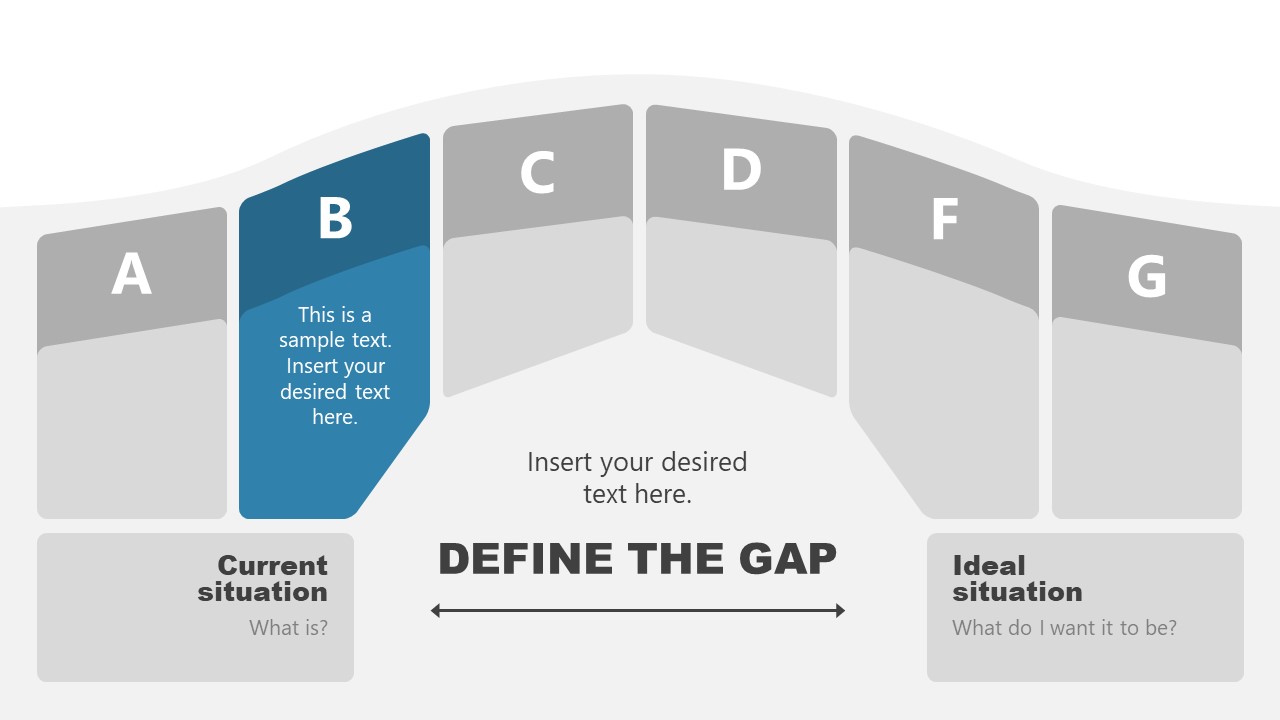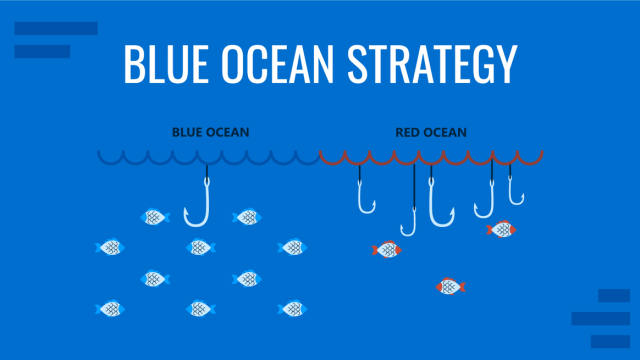
The fast-paced way we consumers live poses companies with many challenges that affect their performance. Things like keeping up with customers’ wants, dealing with new technologies, and improving employee performance can be problematic. To tackle these challenges, businesses need smart plans and valuable tools for Business Performance Gap Analysis, such as Fit Gap Analysis.
This guide introduces Fit Gap Analysis as a strategic solution to overcome these hurdles. It aims to bridge the gap between the existing state and desired objectives. The focus is on providing a practical guide for businesses seeking to overcome these challenges effectively.
Table of Contents
- Understanding Fit Gap Analysis
- Benefits of Conducting a Fit Gap Analysis
- The Fit Gap Analysis Process
- Tips For Successful Fit Gap Analysis
- Fit Gap Analysis Template
- Real-Life Case Studies of Fit Gap Analysis Implementation
- Do’s and Don’ts of Fit Gap Analysis
- Common Pitfalls to Avoid in Fit Gap Analysis Processes
- How to Ensure Fit Gap Analysis Results are Actionable
- Conclusion
- References
Understanding Fit Gap Analysis
Fit Gap Analysis is a technique businesses use to evaluate their existing business processes and capabilities compared to their desired future state[1]. It highlights disparities between the current and desired future states and formulate strategies to address these gaps. This method involves a structured assessment of existing business processes and capabilities. It is followed by developing strategies to close the identified gaps and move closer to the desired future state. Fit Gap Analysis isn’t just a routine checkup. It’s like a detective work that carefully looks at where a business is now and where it wants to go.
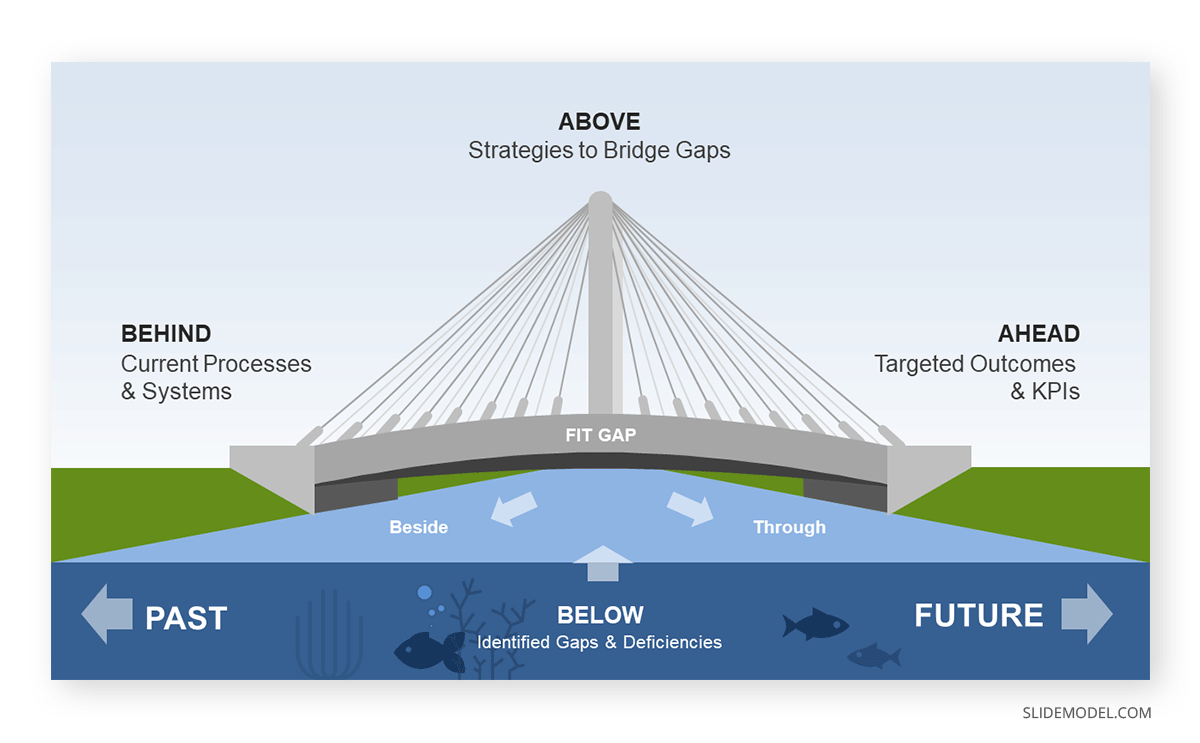
The role of Fit Gap Analysis in identifying the gap between the current and desired state
Fit Gap Analysis looks closely at different parts of a business, such as how things are done, the tools used, and what the company wants to achieve[2]. It identifies the gaps where the current way of doing things doesn’t match what the business wants to achieve.
Checking How Things Are Done
First, it carefully checks how a business’s day-to-day work is done. This includes looking at different processes and methods to see if they match the business’s goals.
Comparing with Goals
The focus is comparing how the business works now with what it wants to achieve. This part looks at the big goals, performance benchmarks, and other vital targets to see if the current way of doing things is helping the business move toward these goals or if there are gaps that need fixing.
Looking at the Technology in Use
Fit-gap analysis also examines a business’s tools and technology. This means checking the software, hardware, and other tech tools to find any gaps that might slow things down.
Examining What the Tools Can Do
It dives into the features and abilities of a business’s tools. It looks at the remarkable things these tools can do and whether they’re helping the company reach its goals or if limitations are holding things back.
Benefits of Conducting a Fit Gap Analysis
Fit Gap Analysis yields multifaceted benefits, serving as a strategic compass for organizational enhancement.
Roadmap for Improvement
By thoroughly identifying discrepancies, Fit Gap Analysis offers a precise roadmap for organizational improvement. It pinpoints specific areas requiring attention and enables focused strategies to enhance overall efficiency.
Optimized Resource Allocation
This analysis facilitates resource allocation by directing attention to critical areas. Businesses can prioritize efforts, ensuring resources are deployed effectively to address the most pressing gaps. This contributes to cost-effectiveness and strategic resource management.
Mitigation of Change Management Risks
Fit Gap Analysis minimizes risks associated with change management. Organizations can develop robust change management strategies through a comprehensive understanding of gaps and challenges. It will ensure a smoother transition and enhance overall adaptability.
Informed Decision-Making
It provides a holistic view of current and future goals, helping leaders make strategic decisions based on understanding the organization’s aims and objectives.
Enhanced Organizational Efficiency
By addressing gaps and aligning processes with objectives, Fit Gap Analysis enhances organizational efficiency. It promotes a proactive approach to solving problems. It also fosters a culture of continuous improvement within the business.
The Fit Gap Analysis Process
Fit Gap Analysis stands as a valuable tool in addressing organizational challenges. It provides a structured approach to bridge the gap between current states and desired objectives. To understand it in more detail, a step-by-step process guides you in conducting a Fit Gap Analysis.
Step-By-Step Guide on How to Conduct A Fit Gap Analysis
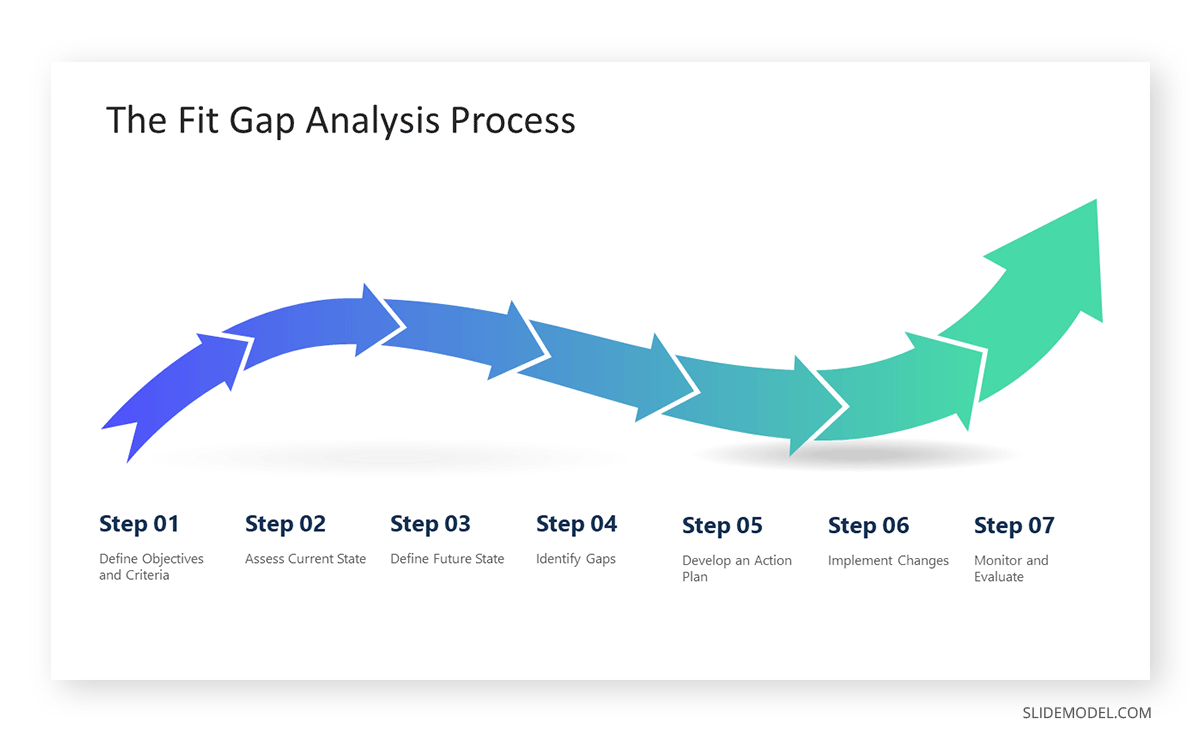
Step 01: Define Objectives and Criteria
The process begins by clearly defining the organizational objectives and the criteria for success. This involves understanding what the business aims to achieve and setting measurable benchmarks.
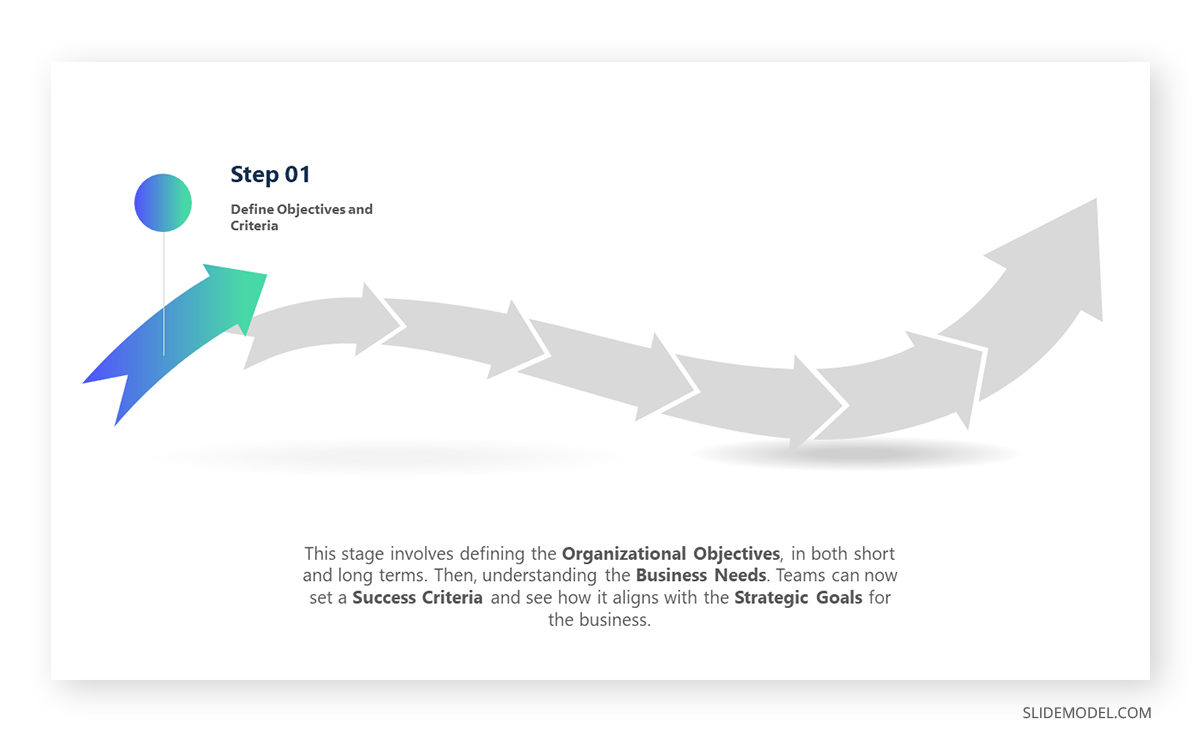
Step 02: Assess Current State
Thoroughly examine the organization’s current state, including existing processes, technologies, and functionalities. It will find out where the organization is standing right now. This step involves a detailed analysis of day-to-day operations.
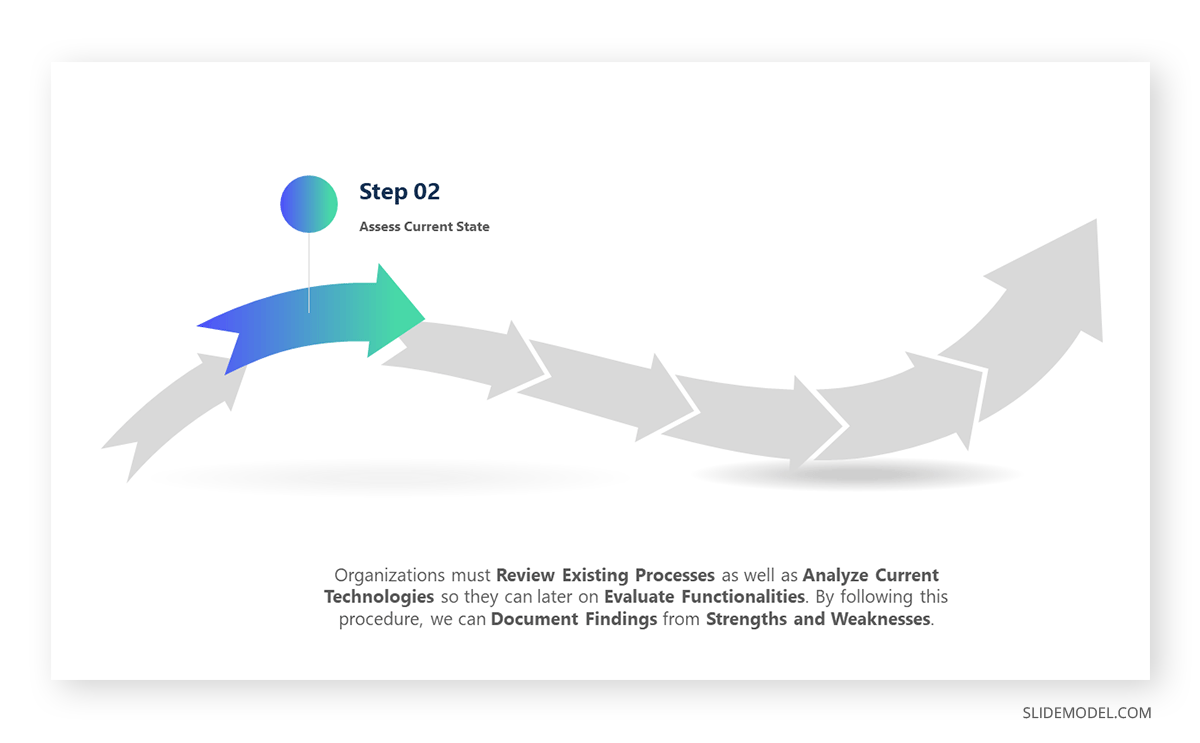
Step 03: Define Future State
Clearly communicate the desired future state. This includes outlining strategic goals, performance benchmarks, and key performance indicators (KPIs) the organization aims to reach.

Step 04: Identify Gaps
Compare the current state with the future objectives to identify gaps. This involves scrutinizing processes, technologies, and functionalities to pinpoint areas lacking alignment.
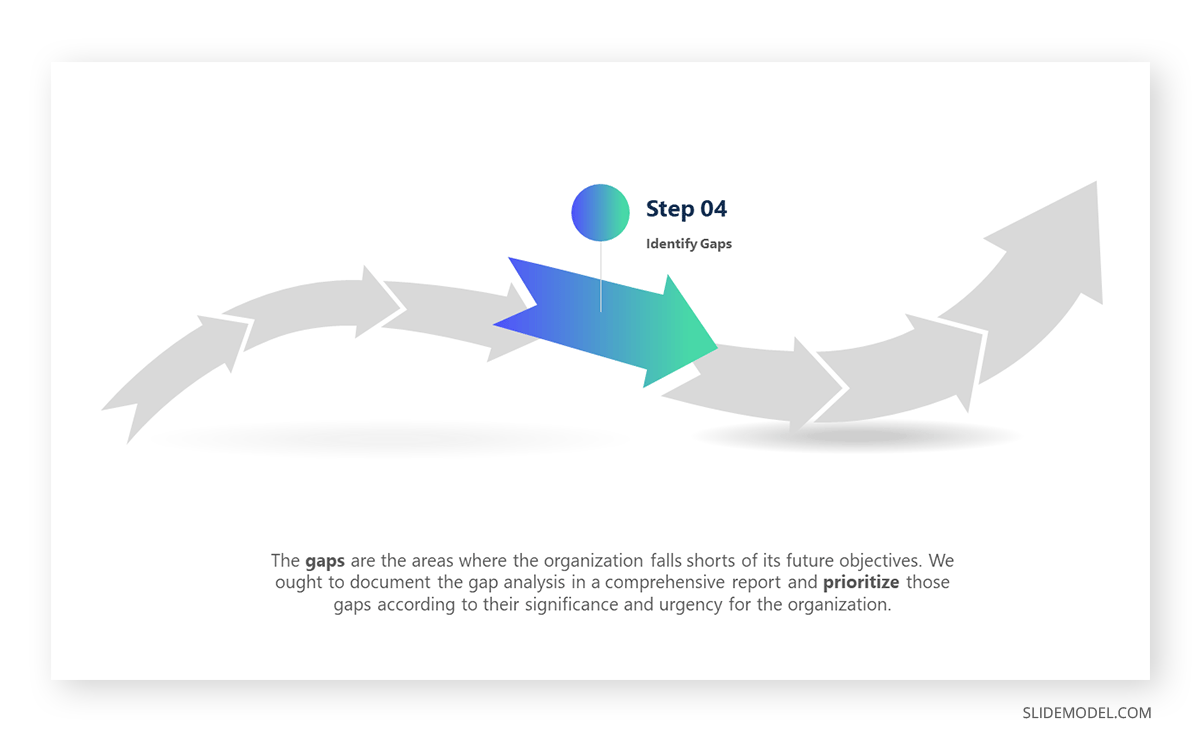
Step 05: Develop an Action Plan
Once gaps are identified, develop a detailed action plan to address and bridge these gaps. This involves outlining specific strategies, timelines, and responsibilities for implementation.
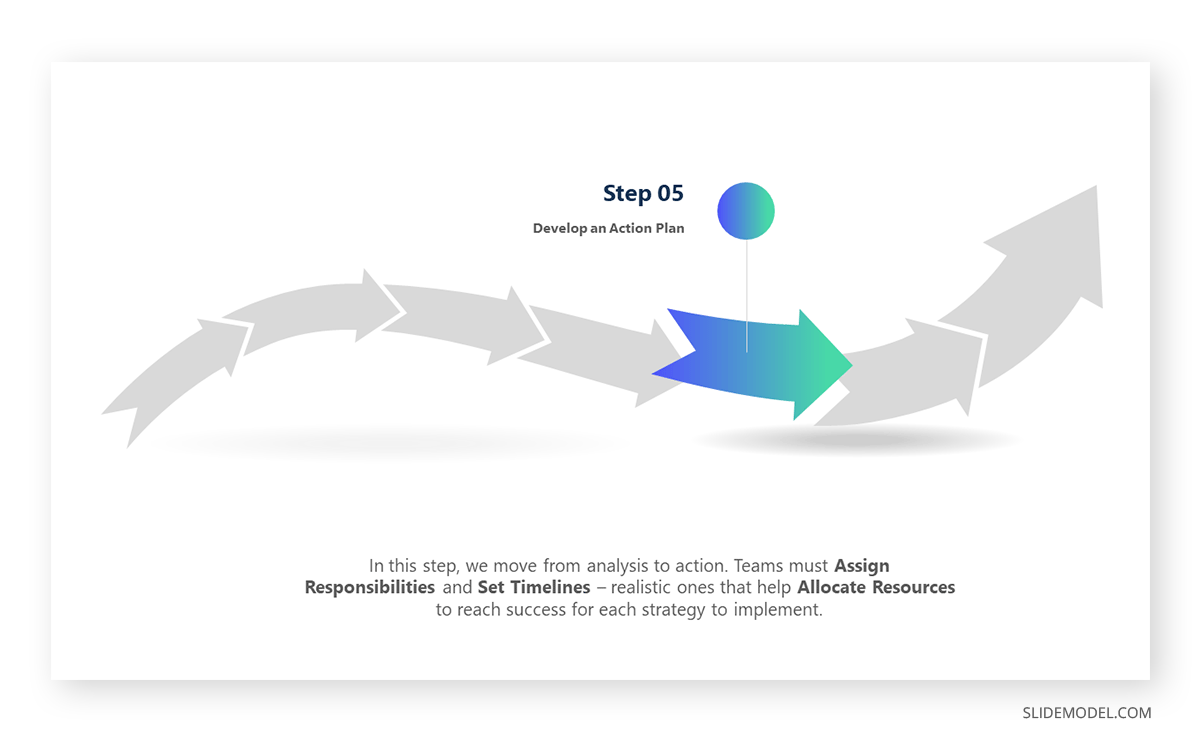
Step 06: Implement Changes
Execute the action plan, making the necessary changes to align the organization with its objectives. This may involve process improvements, technology upgrades, or other strategic adjustments.

Step 07: Monitor and Evaluate
Continuously monitor and evaluate the changes made. This step ensures that the implemented solutions are practical and that the organization is moving closer to its goals.

Common Challenges and How To Overcome Them
When conducting a fit-gap analysis, individuals and organizations face some challenges. Some of the common challenges are listed below;
Lack of Data Availability
One common challenge is a lack of comprehensive data. To overcome this, organizations can invest in data collection tools and methodologies to ensure they have the necessary information for analysis.
Resistance to Change
Employee resistance can hinder the implementation of necessary changes. To increase buy-in, address this by fostering a communication culture and involving employees in decision-making.
Inadequate Resources
Limited resources, whether financial or human, can pose challenges. Prioritize initiatives based on their impact, allocate resources carefully, and explore cost-effective solutions.
Unclear Objectives
Ambiguous or unclear objectives can lead to ineffective analysis. It is essential to ensure that organizational goals are well-defined and communicated to all stakeholders for a more focused Fit Gap Analysis.
Tips For Successful Fit Gap Analysis
A fit /gap analysis helps find areas where your business can improve and achieve what you expect. It becomes even more potent if you remember a few tips while doing this analysis.
Establish Clear Goals
Make sure your goals are SMART – specific, measurable, achievable, relevant, and timely. This helps assess if your current processes match what you expect for your business outcomes.
Collaborative Approach
Involve key stakeholders and subject matter experts from various departments to ensure a holistic understanding of the organization’s landscape.
Data Accuracy
Emphasize the importance of accurate and reliable data. The success of Fit Gap Analysis heavily relies on the quality of information used for assessment.
Choose the Right Template
Understand the type of gap analysis needed. For a more accurate assessment, choose a gap analysis template that fits the nature of your business.
Prioritize Training
Put the fit gap analysis improvements into action and make training a crucial part of this process. This will ensure everyone is on the same page and ready for the changes.
Record and Plan
Document the gaps you find and create action plans to fill them. Keeping track helps understand what needs to be done and how progress is made.
Focus on Efficiency
The main goal of the gap analysis should be to boost efficiency and cut down on any suboptimal performance or usage. Keep an eye on making things work better overall.
Regular Reviews
Conduct regular reviews of the analysis process to stay agile and responsive to changing organizational needs. Flexibility is key to ongoing success.
Fit Gap Analysis Template
A well-designed template makes Fit Gap Analysis more accessible and efficient. Understanding what a Fit Gap Analysis template is, how it streamlines the process of conducting a Gap Analysis, and its key components is crucial for organizations to enhance their operations.
Explanation Of What A “Fit Gap Analysis Template” Is
A Fit Gap Analysis Template is a structured framework or tool that guides organizations through evaluating the misalignment between their current state and desired future state. Essentially, it is a pre-defined format or document that outlines the steps and components necessary for a detailed analysis. The template acts as a roadmap by offering a standardized approach, ensuring consistency and completeness in the analysis process.
How A Fit Gap Analysis Template Can Streamline the Process
Implementing a Fit Gap Analysis template streamlines the analysis process in several ways. Firstly, it provides a clear and organized structure, eliminating the need for teams to start from scratch. This saves valuable time and ensures that critical elements are not overlooked. A gap analysis template promotes consistency across different projects or departments within an organization. This simplifies communication, making it easier for teams to collaborate and share insights. Besides, anyone can edit the gap analysis slide template easily. Thus, it acts as a guide to improve efficiency and effectiveness in the analysis process.
Key Components of A Fit Gap Analysis Template
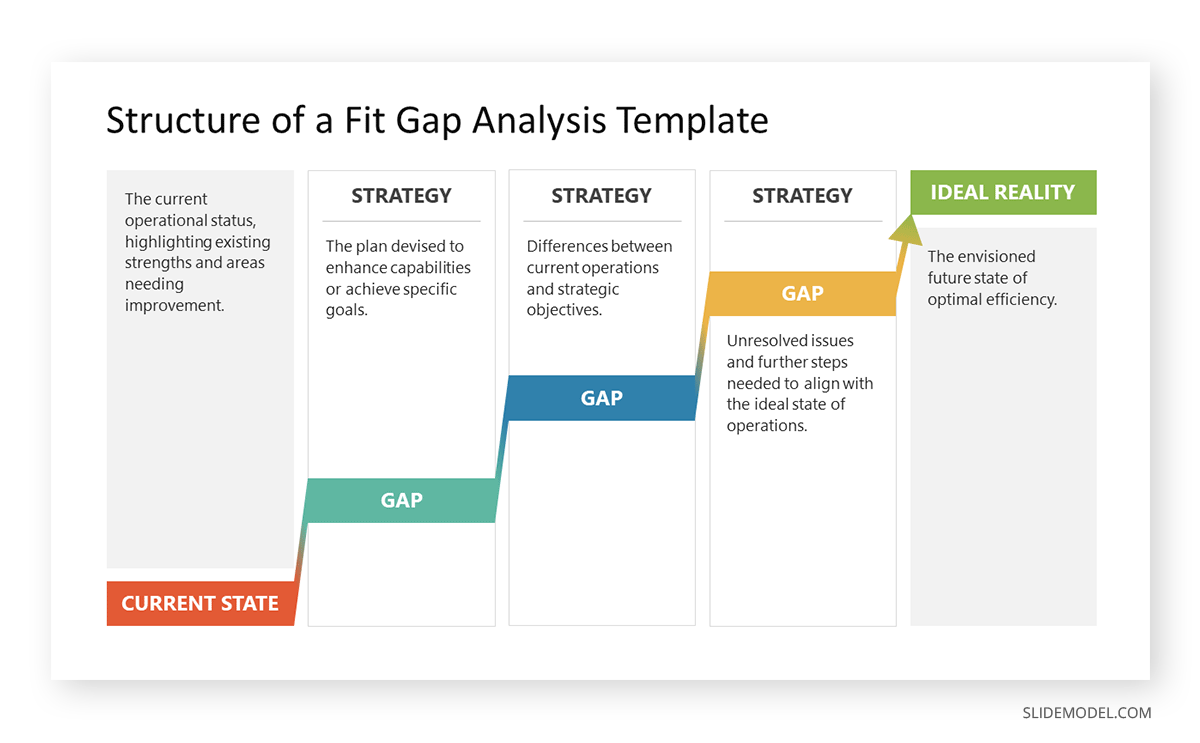
Objective Definition
Clearly outline the objectives of the analysis. This includes defining the organization’s goals and success criteria.
Current State Assessment
Provide a section for a detailed examination of the organization’s current state. This involves assessing existing processes, technologies, and functionalities.
Future State Definition
Articulate the desired future state. Outline strategic goals, performance benchmarks, and key performance indicators (KPIs) the organization aims to reach.
Gap Identification
Create a structured area to identify gaps between current and future objectives. This involves scrutinizing processes, technologies, and functionalities to pinpoint misalignments.
Action Plan Development
Allocate space for the development of a detailed action plan. This includes outlining specific strategies, timelines, and responsibilities for implementing changes to bridge identified gaps.
Review and Evaluation
Include a segment for continuous review and evaluation of the analysis process. This allows for ongoing improvements and adjustments based on evolving organizational needs.
Recommended Fit Gap Analysis Templates
Check the following Gap analysis PowerPoint templates tailored to create professionally designed fit gap analysis presentations.
Real-Life Case Studies of Fit Gap Analysis Implementation
Case 1: Improving Social Media Presence and Services
Suppose a small local bakery, Sweet Delights, wants to improve its online presence and delivery service. It conducts a Fit Gap Analysis to get the desired results. The bakery has an outdated website with limited product information. The current online presence is ineffective in displaying the full range of products. At the same time, it is using a single local delivery service with limited delivery time slots. This delivery service is not flexible enough to meet varying customer schedules. Using a Fit Gap Analysis Template, the bakery presents its results to the stakeholders.
Step 1: Introduction
This part briefly outlines the objective and the importance of the fit gap analysis. Sweet Delights is on a mission to improve how they connect with customers online and deliver their treats. They look closely at their current website and single delivery service to improve things. This fit gap analysis is crucial to ensure they meet the rising demand for online orders and deliveries. The goal is straightforward – to make their customers happier, boost their online presence, and tackle the challenges they face in their delivery service.
Step 2: Fit and Gap
Here, the bakery identifies its current and desired state through analysis of fit gap scores.
Fit (Current State)
The website is like a basic recipe—it gets the job done but does not give customers the full flavor of what Sweet Delights offers. About 500 people visit the website, but unfortunately, 15% of them leave without really checking out their delicious treats. It’s like having a storefront where people peek in but don’t step inside. On a scale of 1 to 5, they would rate their current website at 2.5.
At the same time, their delivery service is currently tied to one local delivery option, and customers aren’t happy with the limited delivery times. They gave their current delivery service a score of 2.2 out of 5. The fit analysis exposes the limitation of this approach, evidenced by customer feedback expressing dissatisfaction with the limited delivery options.
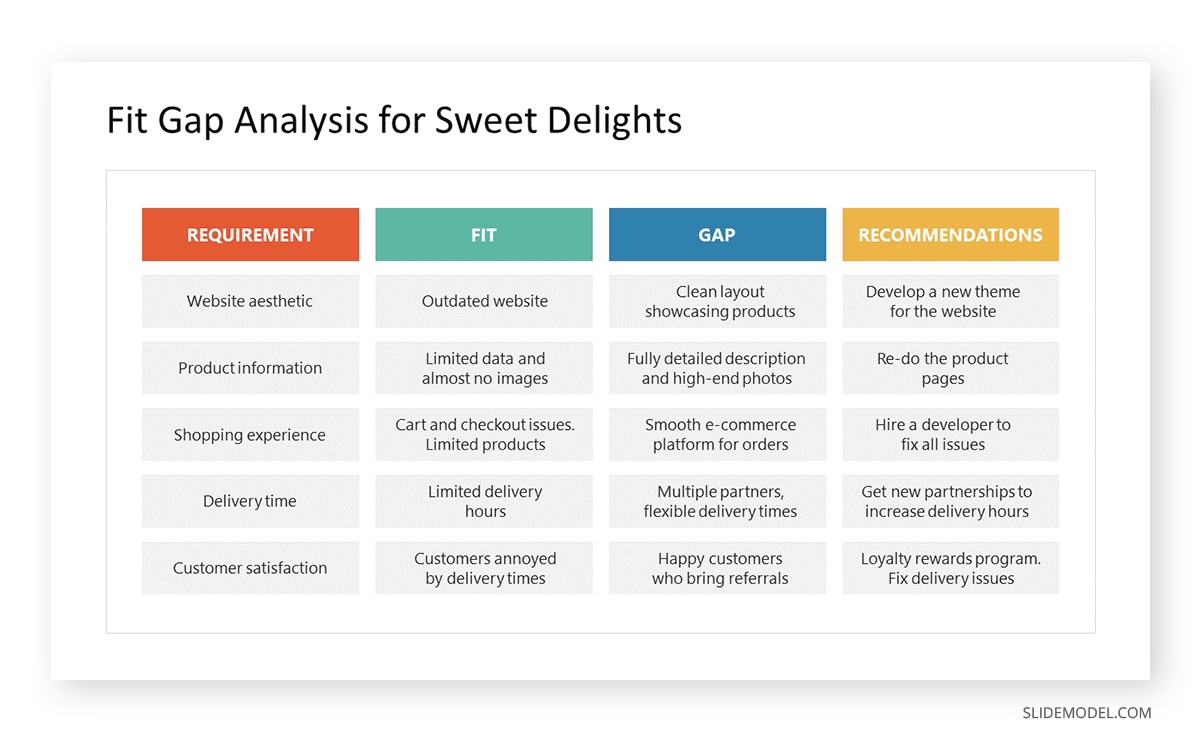
Gap (Desired Future State)
They want a minimum of 4 out of 5 for their website. The gap analysis visualizes an upgraded website featuring an online ordering system, high-quality images, and customer engagement elements. This includes a visually appealing product display, customer reviews, and an efficient online ordering interface to streamline purchasing.
Besides, the gap analysis underscores the need for multiple delivery partnerships and enhanced flexibility. Sweet Delights aspires to collaborate with various delivery services to offer more diverse time slots. It ensures that the bakery can cater to varying customer schedules and preferences.
Step 3: Action Plan
To address the identified gaps, Sweet Delights outlines an action plan. For the online presence, the bakery will initiate the development of an updated website UI with online ordering features, investing in high-quality visuals and engaging content. Simultaneously, Sweet Delights plans to forge partnerships with new delivery services to broaden its reach and improve flexibility in delivery time slots. The bakery establishes a clear implementation timeline, focusing on completing website development within three months and onboarding new delivery partners within six months.
Case 2: Resource Fit Gap Analysis
Businesses also use a resource fit gap analysis to compare the current state of their resources (such as human resources, technology, or other assets) with the desired state. This case is an example of a resource fit gap analysis for reducing production costs in a furniture company.
Step 1: Identify Resources
First, the company enlists its most important resources for production.
Raw Materials
The company relies heavily on wood, a primary material sourced from a local supplier. This includes various types of wood, such as oak, pine, or walnut, each serving different purposes in the furniture-making process.
Labor
Skilled craftsmen contribute their expertise to create intricate designs and ensure the quality of the final products.
Machinery
The company compiles a detailed list of all tools and equipment used in the manufacturing process. This includes cutting and shaping tools such as saws and routers, along with assembly line equipment such as conveyor belts and automated systems.
Step 2: Current State Assessment
This step checks the business to see where it stands and what needs attention.
Raw Materials
First, they must determine the cost of the wood and whether it’s top-notch. They’re currently buying wood at $5 per board foot from their local supplier, which helps them understand the cost and quality of the material they’re working with.
Labor
They also want to understand how their skill force contributes to the process. Currently, the craftsmen work for 8 hours a day. However, they’ve noticed some idle time during transitions between tasks. This assessment helps them determine how to optimize their work hours and productivity.
Machinery
Lastly, they need to ensure the machines are in good condition. The cutting and shaping tools, notably the saws and routers, are operational with no significant issues. However, we must consistently monitor their performance and conduct routine maintenance to ensure they align seamlessly with our production needs.
Step 3: Future State Requirements
In the future, the company wants to ensure it gets the best deal on the materials they use.
Raw Materials
The ideal situation involves talking to the current supplier and trying to negotiate a 10% discount. They’re also planning to check out other suppliers to see if there are better options that can save us money and strengthen their supply chain.
Labor
Looking ahead, they also want to make their work team more efficient. They want to ensure everyone is working smoothly and not wasting time. They will improve how tasks flow, making sure things keep moving. They’re also going to teach their team different skills so they can handle various jobs, reducing any downtime.
Machinery
In the future, they want to invest in new and improved equipment that works faster and doesn’t break down as much. This includes getting better tools for precise work and making the assembly line smarter with modern automation. The idea is to make everything run smoother so they can produce more without hiccups.
Step 4: Perform Gap Analysis
Raw Materials
This part highlights the gap, which is the difference between the current status and the desired future status. The gap between current and desired costs is identified after negotiations or exploring new suppliers. For example, they found that their local supplier’s current wood cost is $5 per board foot. After negotiations, the ideal cost would be $4.50 per board foot, representing a 10% cost gap.
Labor
The productivity gap is identified by comparing the current efficiency to the desired state. The company wants 90% productivity, whereas the current productivity is at 65%. There is a 15% productivity gap that needs to be addressed.
Machinery
The efficiency gap is identified as 20% by comparing the efficiency of the current state of machinery to the ideal state. Efficiency can be improved by integrating Computer Numerical Control (CNC) machines for precise and automated wood cutting and shaping. Smart conveyor systems with sensors are efficient for material flow and reduce manual handling.
Step 5: Prioritize Gaps
In prioritizing gaps to reduce production costs, the company will first focus on negotiating a 10% discount with the raw materials supplier and exploring alternative suppliers. The immediate impact on costs makes this the top priority.
Step 6: Develop an Action Plan
As a result, the company has devised these steps to reduce production costs.
Raw Materials Cost Gap (10%):
- Initiate discussions with the current supplier for a 10% discount.
- Explore alternative suppliers for potential cost savings.
Labor Productivity Gap (15%):
- Implement a training program to optimize workflow and reduce idle time.
- Cross-train workers to enhance flexibility and minimize downtime.
Machinery Efficiency Gap (20%):
- Invest in advanced CNC machines for precise and automated cutting.
- Upgrade assembly line equipment with smart conveyor systems.
Do’s and Don’ts of Fit Gap Analysis
Fit Gap Analysis, a valuable tool for organizational improvement, requires a strategic approach to yield effective results. Understanding the dos and don’ts is essential to navigate this process successfully.
Do’s of Fit Gap Analysis
- Clearly Define Objectives: Start with well-defined objectives to guide the analysis. Clearly, articulated goals provide a roadmap for the entire process.
- Involve Key Stakeholders: Collaboration is key. Involve key stakeholders from various departments to ensure a holistic understanding and gather diverse perspectives.
- Thoroughly Assess Current State: Conduct a comprehensive examination of the current state, covering processes, technologies, and functionalities. This forms the basis for identifying gaps.
- Articulate Future State Clearly: Clearly outline the desired future state, specifying strategic goals, performance benchmarks, and key performance indicators. This clarity guides the analysis towards actionable results.
- Develop Actionable Plans: Ensure that the action plans developed to address identified gaps are specific, measurable, and time-bound. This makes them more actionable and facilitates effective implementation.
Don’ts of Fit Gap Analysis
- Skipping Stakeholder Involvement: Avoid excluding key stakeholders. Their insights are crucial for a well-rounded analysis; ignoring this step can lead to oversight.
- Neglecting Data Accuracy: Don’t compromise on data accuracy. Relying on inaccurate or incomplete data can result in flawed analysis and ineffective action plans.
- Overlooking Change Management: Ignoring the human aspect of change can be detrimental. Neglecting change management strategies may lead to resistance and hinder successful implementation.
- Neglecting Continuous Improvement: Fit Gap Analysis is not a one-time event. Avoid failing continuous improvement efforts to stay adaptable and address evolving organizational needs.
Common Pitfalls to Avoid in Fit Gap Analysis Processes
While conducting a Fit Gap Analysis, organizations should be aware of common pitfalls that can undermine the effectiveness of the process.
- Lack of Executive Support: Insufficient support from top leadership can hinder the implementation of recommended changes. Ensure executive solid backing for a smoother transition.
- Inadequate Training: Neglecting to train employees on new processes or technologies can lead to confusion and resistance. Prioritize comprehensive training programs to facilitate seamless adoption.
- Ignoring Technology Updates: Overlooking necessary updates or advancements in technology can result in missed opportunities for improvement. Regularly review and update technologies to stay current.
How to Ensure Fit Gap Analysis Results are Actionable
The ultimate goal of Fit Gap Analysis is to drive actionable results. Ensuring that the outcomes translate into practical strategies requires attention to specific aspects:
- Alignment with Organizational Goals: Verify that the identified gaps and action plans align with broader organizational objectives. This ensures that improvements contribute to overarching goals.
- Prioritize Recommendations: Not all identified gaps may have an equal impact. Prioritize recommendations based on their significance to the organization’s success for more focused implementation.
- Continuous Monitoring and Evaluation: Establish mechanisms for monitoring and evaluating implemented changes. Regular reviews ensure that adjustments can be made promptly if needed.
Conclusion
Digging into the Fit Gap Analysis shows how important it is for making organizations better. The Fit Gap Analysis template doesn’t just point out problems. It also gives practical ideas for improvement, making it crucial to make smart decisions and use resources well. Following the principles in this guide helps teams and organizations see problems and actively work on fixing them, making decisions that match bigger goals. Fit Gap Analysis isn’t just a one-time thing. It becomes part of how organizations keep improving in a constantly changing world.
References
[1] Fit gap analysis. CEOpedia. https://ceopedia.org/index.php/Fit_gap_analysis (Accessed: 13 February 2024).
[2] Kiec, M., 2021. Fit-gap analysis is an introduction step to business process standardization. Scientific Journal of Silesian University of Technology Series Transport Issue No. 153(Issue No. 153):193
